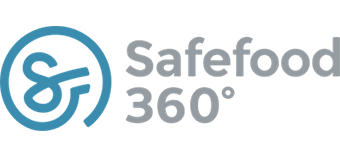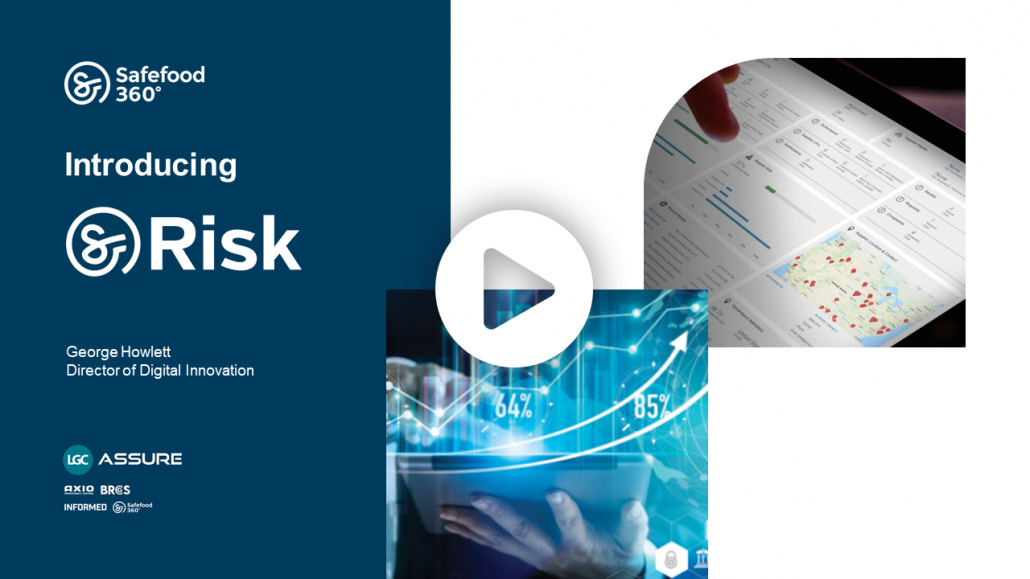What does 2022 and the Future Hold for Food Safety?
The challenges presented by the Covid-19 pandemic have undoubtedly accelerated the popularity of one of the most prominent buzzwords in recent years, big data.
The food industry, like many others, has not avoided the use of this term or what it represents, and indeed, it now holds a value that gives it more importance than oil or gold for many companies.
As many food manufacturers, producers, packagers, growers, and distributors have scrambled to compete in a rapidly adverse supply chain climate, data and our ability to collect, collate, compile, structure, interpret and analyze it, has become a priority challenge for those who wish to protect their product and secure brand integrity.
Data has become a priority challenge for those who wish to protect their product and secure brand integrity
Like wildfire, what was once a growing argument has quickly become a common sentiment.
Arguably data has become the most important asset we have to discover what works and what does not work in all aspects of our supply chain.
While good data structure within our processes can help us look inwards to examine these concerns and determine answers, larger datasets also allow us to look beyond the four walls of our business and see what potential risks and challenges await us in our supply chain.
Looking back at the two last two years, the challenges and complexities of these supply chains have taken a form that no one could have reasonably predicted, but in challenge exists opportunity.
With these recent events in mind and an eye to the horizon, what might the future of data and our industry look like?
Do traditional data structures need to change and how can we change our relationship with data?
Since the publication of Upton Sinclair’s ‘The Jungle’ in 1905, the food industry has been on an upwards curve of continuous improvement.
Although progress had initially been uneven at best and slow at worst, technological, legal and industry requirements have accelerated the burden and onus of compliance, in recent years.
When the Global Food Safety Initiative (GFSI) was formed at the turn of the millennium, it is not unkind to say that the initial reception from some corners of industry were skeptical.
However, it quickly became apparent that this was not going to be a fruitless endeavor, and the industry saw which way the wind was blowing and promptly fell in step.
Self-regulation can often be seen as a tricky thing within different industries, but when people’s health is at risk, nothing should ever be left to chance.
Not much sooner was it apparent that the GFSI was here to stay and become the dominant voice among global industry than global legislation quickly followed.
That all said, as the intervening 20 years have played out, the pace of change has accelerated dramatically and at least in the US, the FDA has realized that legislation alone is not enough.
With the publication of its New Era for Smarter Food Safety Blueprint, the FDA has acknowledged that modern problems require modern solutions.
However, like how strong the foundations of any house begin with its blueprint, the question remains for these modern problems and solutions, do our traditional data structures need to change how we conceive data?
The question remains for modern problems and solutions, do we need to change how we conceive data?
A natural by-product of compliance is the proliferation and accumulation of data.
Historically, this process data would be captured and stored, never to see the light of day save for the request of an auditor or if a root cause was being investigated.
With the advent of modern technology, how we treated this process data evolved and became a means through which a business could monitor and continuously improve.
Too often, this required specific technological solutions that came with steep learning curves, dedicated in-house resources in the form of data scientists, or long delays that required custom reports from IT departments that could be overwhelmed and under-resourced.
Although results could often be slower than liked, the inherent structure of the data itself was adequate, but data can only be as good as the questions you ask it.
Data can only be as good as the questions you ask it
If it took a prolonged period of time to question your data, priorities might shift within the business, and by the time an answer was gleaned, another question could be needed to be investigated before the learnings from the first could ever be applied.
When this happened, it often meant labor and resources were being applied to yield little dividends, other than questioning data for data’s sake.
While this data had a functionality utility and value, it was still dependent on what was deemed “important” at the time.
What I mean to say is, what was considered important for improvement was conditional on what was deemed important to capture, and what was deemed important to capture, was conditional on what was required to stay in compliance.
As data could only be compiled and learned from what we captured, it meant that larger learnings often remained out of reach for many but the most well-resourced companies.
As data could only be compiled and learned from what we captured, it meant that larger learnings remained out of reach for many but the most well-resourced companies.
I believe it is fair to say that one of the biggest shortcomings of compliance and data management is that both traditionally have involved a level of trust between stakeholders to maintain the integrity of the chain.
I also believe that although the vast majority of stakeholders are good actors who act in trust, it does not mean we should not strive for improvement where advancements can be made.

What a supplier reports to a manufacturer, and a manufacturer to a retailer, and both to a Certification Body, has traditionally been submitted in good faith on an understanding that it is reflective of the process each day, however, by its nature, it is a singular moment of compliance and static representation of the larger picture.
While the structure of data itself is inherently strong and does not need to change, recent technological advancements have significantly removed barriers to stakeholders at all levels and provide us the means to improve how we report on data.
What the future of data might look like
Since our inception more than a decade ago, Safefood 360° has always been “data first”.
While this shouldn’t be a surprise to anyone reading the blog of a software company, what I mean is that we have been committed to marrying domain expertise with innovative software.
We believe in the fundamental value of food safety and making this accessible to all, clearly and concisely, whether they be food safety practitioners or not.
The increasing burdens of compliance, both legal and commercial, have shown that good data governance marries the application of internal and external data.
Good data governance marries the application of internal and external data
It is only through considering what is happening outside of four walls and within it, that manufacturers can present a holistic and honest view of not just the robustness of their processes, but also what is occurring external to them and outside of their control, and the potential effects that this may have, whether foreseen or not.
To speak bluntly about this, many people will use the term data and make grandiose claims of what it means, how it can be used, and what it can be used for.
While much of this is of interest and has great merit, it must be balanced with today’s problems and concerns, and not what data can do for me in 5 or 10 years, but what it can do for me now.
The solution of the future is one that does not just put data at its heart but backs it up with expert technical services and data science which monitor production and process lines 24/7, monitoring all data from the machines, predict what problems are likely to occur, and make proactive recommendations to the end-user in a digestible format that is clear and actionable.
What this means is not just putting the power of plant management into your hand, but putting the power of predictive analytics and foresight into the heart of your processes, so that you can drive real results on the bottom line and not just focus on the outputs.
In cases where a problem can and does occur, if you have successfully integrated data capture, you can really analyze the problem, looking at larger datasets than one typically might if they were using traditional methods, and look at levels or potential inputs that one otherwise might overlook.
This will allow you to determine the root cause of the issue and find a solution remotely.
Put the right information, at the right time, in the right place – where your team are, and are able to take action
This means you put the right information, at the right time, in the right place – where your team are, and are able to take action.
What have we done to achieve this?
I have already said that since our conception our mission has been to combine domain expertise with a world-class software platform that “brings it all together”.
We actively meet, listen and consult with our customers on product roadmaps, and while the “it” of what we bring together might have changed over the years, it is clear that the need for cohesion and unity in solutions is stronger than ever.
Similar to the FDA’s Blueprint, any great plan is only as strong as its conception.
One does not start with the foundation, but rather the concept, and ensures that they are considering all variables before being built.
That said, the last two years have also strongly reminded me of a moment of wisdom from Mike Tyson:
“Everyone has a plan until they get punched in the mouth”.
For many, I am sure the unexpected and ongoing disruptions caused by Covid-19 have felt far worse than just a punch in the mouth, even if it was from Tyson himself.
Our industry, like others, has seen seismic shifts in the last two years and likely will for some time to come.
New laws, regulations, standards, and demands are on the horizon for many, if not already arrived.
However, closer to home we have welcomed significant change and laid some very exciting groundwork.
It has been just over a year since Safefood 360° was acquired by LGC and many of the seeds sown in those early months are now coming in to bloom this Spring and beyond.
Many of the seeds sown in those early months [of our acquisition] are coming in to bloom this Spring and beyond
Safefood 360° is no longer an isolated island in the sea of compliance, but rather we form an integral arm of LGC Assure, the only solution on the market that offers complete supply chain assurance solutions for you and your supply network.
Together, with our partners at the BRCGS, Axio, and Informed Choice, we offer the only holistic solution that safeguards the integrity of your global supply chain beyond software solutions.
Of course, our customers remain at the heart of everything we do and we have listened closely to you and your challenges in the last year.
Not only have we listened, but we have developed solutions for what we are sure will help answer and address these challenges.
We are immensely proud of the first release of this work, Safefood 360° Risk which helps food businesses quickly underpin their risk assessments with scientific data.
This tool is just the first step in helping food businesses get on the road to using predictive analytics and big data sets to meet the growing requirements of compliance.
Within our core application itself, we have some wonderful projects coming to fruition that the team has been hard at work on for the last year.
We have already piloted these to some of our customers in early User Acceptance Testing and the reception has been overwhelmingly ecstatic, so I am sure everyone in the wider customer base will love them too.
As we look to the future, it is evident that change always brings equal, if not a greater amount of opportunity.
The capability to deliver real and significant value to our users has never been greater in our company history
It is apparent the opportunity and capability to deliver real and significant value to our users has never been greater in our company history and I am immensely excited by and extremely eager to show you what the future holds for the Safefood 360° platform.
I look forward to continuing to listen, collaborate, and develop solutions with you all that will change our industry and how we can use software and science for a safer world.
Thank you for joining us on this journey.








Leave a Reply
Want to join the discussion?Feel free to contribute!